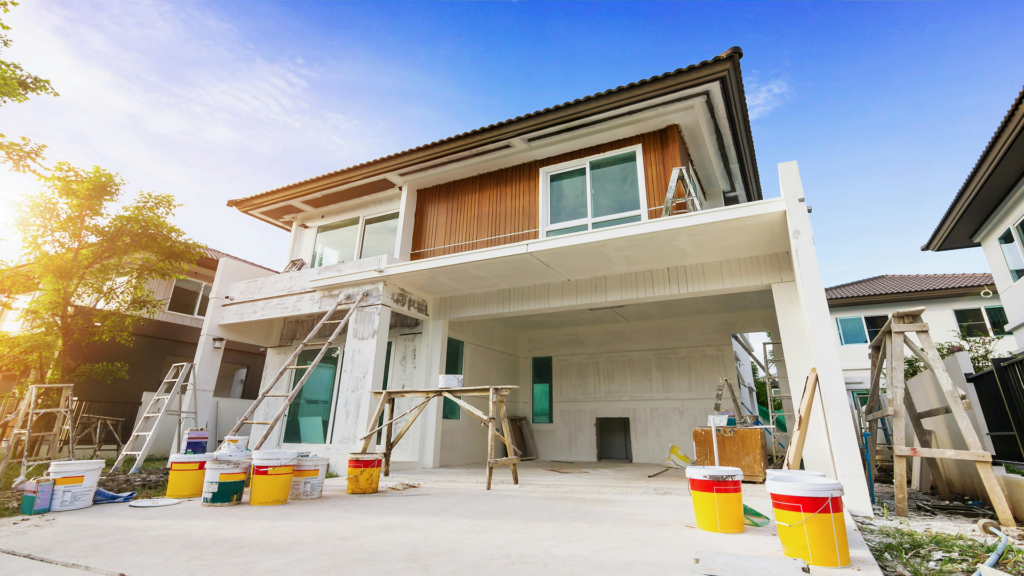1. Introduction to Residential Remodeling
Residential remodeling is more than just a home improvement trend it’s a strategic investment that can significantly enhance your home’s comfort, function, and resale value. Whether you’re refreshing a kitchen, upgrading bathrooms, or adding an entirely new space, remodeling breathes new life into your living environment.
2. Remodeling vs. Renovation
Though often used interchangeably, remodeling and renovation are distinct.
- Renovation involves restoring or updating existing spaces (e.g., repainting walls or replacing flooring).
- Remodeling, however, changes the structure or layout like turning a dining room into a home office.
Understanding this difference is crucial for budgeting, planning, and hiring the right professionals.
3. Why Homeowners Remodel
Common motivations for residential remodeling include:
- Modernizing outdated spaces
- Improving energy efficiency
- Increasing property value
- Accommodating growing families
- Creating personalized living experiences
Post-pandemic lifestyles have also driven demand for home offices, outdoor living spaces, and multi-functional rooms.
4. Planning Your Remodel
Budgeting
Start by setting a realistic budget. Consider:
- Material costs
- Labor
- Permits
- Unexpected expenses (10–20% contingency)
Timeline
Develop a timeline with clear milestones:
- Design phase
- Permitting
- Construction
- Inspections
Design Inspiration
Gather design ideas from:
- Pinterest, Houzz, and magazines
- Architectural firms
- 3D rendering tools and remodeling software
A clear plan streamlines communication and avoids costly changes mid-project.
5. Choosing Professionals
Hiring the right team ensures quality work and peace of mind. Look for:
- Licensed and insured contractors
- Portfolio of completed projects
- Verified reviews
- Transparent contracts and estimates
You may work with:
- General contractors
- Designers
- Structural engineers
- Specialty trades (e.g., plumbers, electricians)
Always get at least three quotes and check local references.
6. Permits, Codes & Compliance
Many remodeling projects require building permits and must comply with local codes and zoning laws.
Permit needs may include:
- Electrical and plumbing work
- Structural modifications
- Window or roof replacement
Non-compliance can lead to fines or even demolition orders. Consult your local building department early.
7. Room-Specific Remodeling Projects
Kitchen Remodeling
Often the heart of the home, a kitchen remodel might include:
- New cabinetry and countertops
- Modern appliances
- Island additions
- Lighting upgrades
Bathroom Remodeling
Popular upgrades include:
- Walk-in showers
- Freestanding tubs
- Dual vanities
- Heated floors
Basement Finishing
Transform your basement into:
- A media room
- Guest suite
- Home gym
- Income-generating rental unit
Attic Conversions
Convert unused attic space into:
- A home office
- Studio
- Bedroom with ensuite
Each room type has different structural and design considerations.
8. Structural & Exterior Remodeling
Roofing & Siding
Ensure structural integrity and curb appeal with:
- Architectural shingles
- Fiber cement or vinyl siding
- Proper insulation
Doors & Windows
Replace old units for:
- Better insulation
- Improved security
- Natural light optimization
Landscaping & Curb Appeal
Exterior work may include:
- Stone walkways
- Porch upgrades
- Exterior lighting
Exterior remodeling improves both form and function.
9. Smart Home Remodeling
Technology is reshaping remodeling decisions:
- Smart thermostats
- Voice-controlled lighting
- Automated security systems
- Smart kitchen appliances
Smart integration enhances convenience, energy efficiency, and home value.
10. Sustainable Green Remodeling
Eco-conscious remodeling includes:
- Energy Star windows and appliances
- Recycled or reclaimed materials
- Low-VOC paint
- Solar panel installation
- Rainwater harvesting systems
Green remodeling reduces utility costs and supports environmental health while increasing appeal to future buyers.
11. DIY vs. Professional Work
DIY Is Ideal For:
- Painting
- Demolition (non-structural)
- Minor landscaping
- Fixture upgrades
Hire Pros For:
- Electrical
- Plumbing
- Roofing
- Load-bearing walls
Cutting corners on complex projects can lead to costly repairs or safety hazards.
12. Remodeling Costs and Financing
Average Remodeling Costs:
- Kitchen: $25,000–$75,000+
- Bathroom: $10,000–$30,000
- Basement: $15,000–$50,000
- Roof: $7,000–$20,000
Financing Options:
- Home equity loans
- HELOCs
- Cash-out refinancing
- FHA 203(k) loans
- Contractor-offered financing
Always calculate long-term ROI before committing to financing options.
13. Maximizing Home Value Through Remodeling
High-ROI remodeling projects include:
- Garage door replacement
- Kitchen upgrades
- Bathroom additions
- Siding replacement
- Energy-efficient upgrades
ROI can vary by location, housing market, and buyer preferences consult with a local real estate expert before major changes.
14. Common Remodeling Pitfalls & How to Avoid Them
Mistakes to Watch For:
- Unrealistic budgets
- No contingency funds
- Hiring unlicensed contractors
- Ignoring permits and codes
- Changing plans mid-project
- Underestimating timelines
How to Avoid Them:
- Create detailed scopes of work
- Vet all professionals
- Maintain a communication log
- Visit job sites regularly
Proactive management ensures a smoother remodeling journey and better results.
Final Thoughts
Residential remodeling is a rewarding journey when approached with proper planning, professional execution, and smart investment. Whether you’re creating your forever home or preparing to sell, thoughtful remodeling will help you create a space that meets your needs today and tomorrow.
